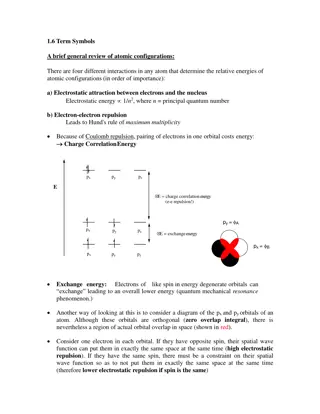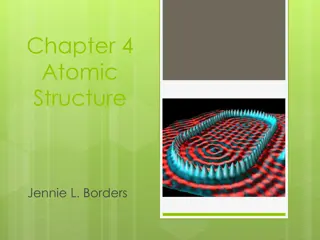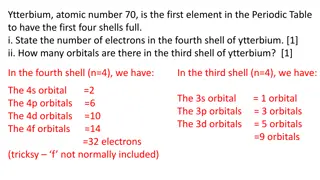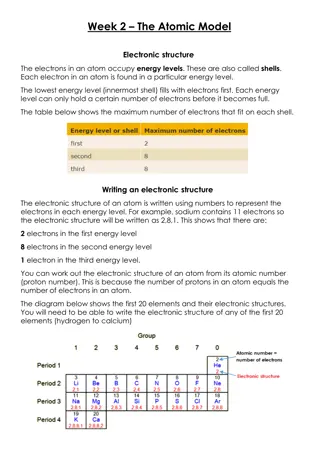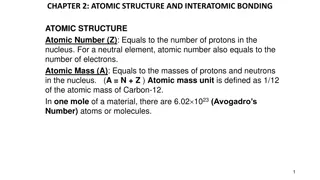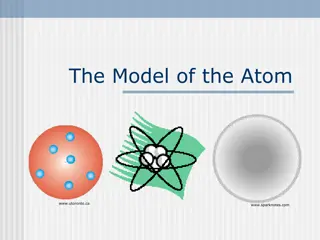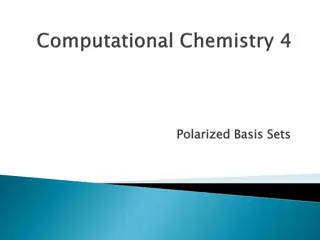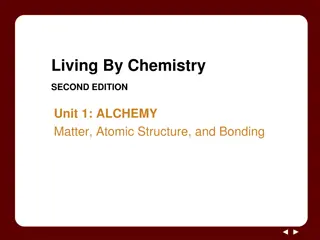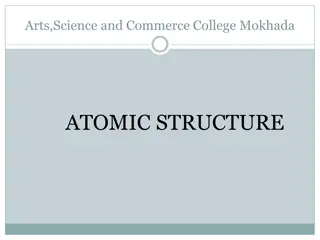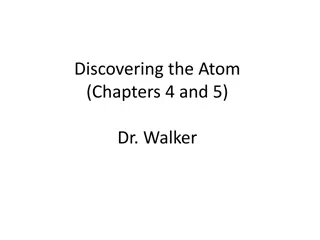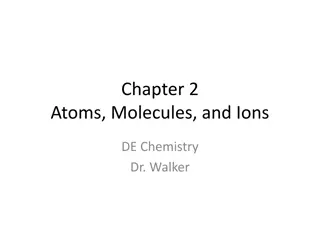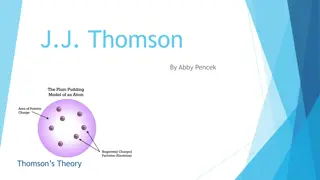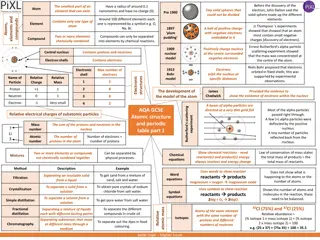JJ Thomson: Discoverer of the Electron and Pioneer in Atomic Theory
JJ Thomson, Nobel Prize-winning physicist, discovered the electron in 1897 through his study of cathode rays. He proposed the Plum Pudding Model of the atom, revolutionizing the understanding of atomic structure. His work on electrons, isotopes, and mass spectrography solidified his legacy as a leading figure in early 20th-century physics.
Download Presentation

Please find below an Image/Link to download the presentation.
The content on the website is provided AS IS for your information and personal use only. It may not be sold, licensed, or shared on other websites without obtaining consent from the author. Download presentation by click this link. If you encounter any issues during the download, it is possible that the publisher has removed the file from their server.
E N D
Presentation Transcript
JJ Thomson JJ Thomson The Atomic Theory
Who is JJ Thomson? JJ Thomson is the Nobel Prize winning physicist that discovered the electron in 1897. He was recognized for this and his work on the conduction of electricity in gases. He knew that electrons could be emitted from matter.
What did he study? Thomson was engaged in the study of cathode rays. These are glowing beams of light that follow an electric discharge in a high vacuum tube. He began studying them in 1894.
Atoms were thought to be tiny solid spheres 1903 Thomson proposed a model consisting of positive and negative charges Present in equal amounts so that an atom would be electrically neutral Proposed the atom was a sphere, but the positive and negative chargers were embedded within it His greatest contribution, the discovery that the atom consists of charged particles Atomic Theory: The Plum Pudding Model
Prior to Thomson's discovery of electrons, scientists believed the atom was the smallest fundamental unit of matter. Thomson called the particle he discovered 'corpuscles' rather than electrons Thomson discovered the natural radioactivity of potassium in 1905. In 1906, Thomson demonstrated a hydrogen atom had only a single electrons Thomson also investigated the nature of positively-charged particles. These experiments led to the development of the mass spectrograph seen here. Thomson was closely aligned with chemists of the time. His atomic theory helped explain atomic bonding and the structure of molecules. Thomson published an important monograph in 1913 urging the use of the mass spectrograph in chemical analysis. Research influencing his study
JJ Thomsons greatest contribution was as a teacher! 7 of his students went on to be Nobel Prize winners, including his son.
https://www.tandfonline.com/doi/abs/10.1080/14786449708 621070?journalCode=tphm16 https://www.scienceabc.com/wp- content/uploads/2018/04/Plum-pudding-model.jpg https://www.thoughtco.com/j-j-thomson-biography-607780 https://theatomictheoryproject1.weebly.com/uploads/9/9/0/ 5/9905782/6135572_orig.jpg https://onlinelibrary.wiley.com/doi/10.1002/andp.201300732 Sources:








